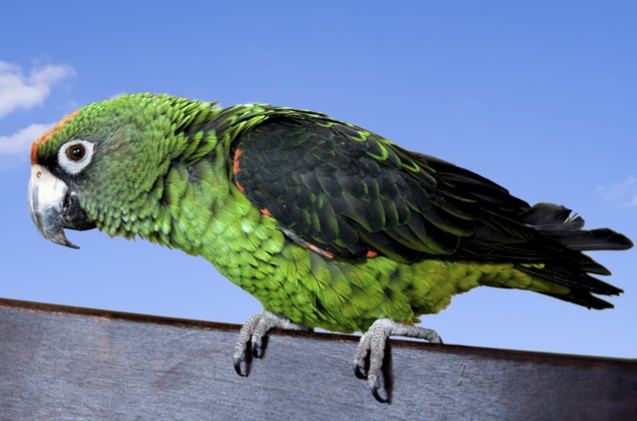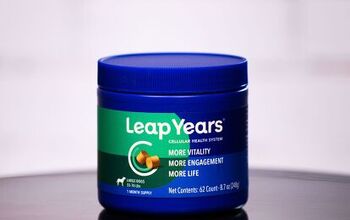Jardine’s Parrot


About Jardine’s Parrot
In the recent years, the Jardine’s Parrot, also known as the red-fronted parrot, became one of the most popular pets in aviculture. Thanks to their intelligence, fun personality and a great ability to talk and mimic sounds, it quickly became obvious that these lovely African parrots are one of the best choices for pets. Their kind and affectionate behavior and positive energy might just be the stuff you’re looking for!
Jardine’s parrots are quickly becoming one of the most popular pet parrots in modern aviculture.
Native Region/Natural Habitat
These parrots are found natively in a few large regions throughout the African continent. They are most commonly seen in Liberia, the Congo river basin, Tanzania, Kenya, Ghana, and others. Jardine’s parrots prefer to nest in holes in dense woodland and lowland rainforests. They are a species protected by law but are still under a moderate threat from heavy deforestation and illegal trapping by the indigenous population.
Jardine’s Parrot is a bird of medium size, and, overall, they share a lot of common traits seen in all the breeds of the Poicephalus family. These include the familiar prominent beak and the squarish tail. The adults reach an average length of 11 inches (28 centimeters). With a combination of their medium size and healthy energy levels, it is necessary for them to have a lot of free space to move around, and of course, a roomy and large cage. Sadly, the males and females are completely identical, so positive identifications is not so simple.
As is almost common with all the parrots from the African continent, the Jardine’s Parrot is also a pretty good talker. They have the remarkable ability to remember and repeat phrases in a very clear and distinct voice, but also to mimic other parrots and animals with eerie precision. Other than this entertaining aspect, they are not generally noisy parrots. They do have a loud natural call, but it’s rarely heard. But either way, when it comes to big exotic parrots and apartment settings, it might not be the best choice.
With their relatively straightforward coloring and symmetrical details, these exotic looking birds slightly resemble the Amazon parrots. Most of the body is green, with lighter tones on the head and the rump. The back, tail, and wings are spotted with black feathers and patches. There are also small black circles around the eyes. Their defining feature that also gives them their name, is the prominent and large bright orange patch that covers the forehead. There are also bright orange patches on the very top of the wings or the so-called “shoulders”. Without a doubt, this great combination of tones and colors gives us an exotic and vibrant parrot that leaves a great first impression.
Jardine’s Parrots are one of the prettiest in the Poicephalus family. Their vibrant and colorful looks certainly set them apart.
In the wild, Poicephalus parrots have a diverse diet that consists of seeds, insects, grass seeds and fruits. To achieve the perfectly balanced diet for your pet, you can start with a commercial seed mix specifically designed for Poicephalus parrots. They contain a good amount of oats, millet, sunflower seeds and nuts. For the much-needed vitamins, you should offer your pet regular fresh fruits and vegetables. Some cooked rice, corn, and chicken can serve as a treat and a source of protein as well.
Jardine’s Parrot, like the commonly associated African Grey parrot, is a robust and muscular bird that has great health. With enough care and attention, you can expect them to live a long and fulfilling life of over 30 years, often reaching their 60th birthday with little issues along the road. This makes them a great companion parrot.
One thing to pay special notice to is bathing. They come from a humid environment, and baths are an important treat for them. But they will also serve as a prevention of skin and feather disease – a potential threat to every large parrot.
For parrots who are native to humid rainforests, bathing is a big priority. Teach them to enjoy a regular shower.
Loved for their intelligence and funny, affectionate personality, Jardine’s Parrot boasts a bunch of loveable traits. They can provide great company, and as they’re cuddly and entertaining too boot, there’s no doubt that you’ll enjoy every moment with them. There is a tendency to bond deeply with a certain, closest member of the family, creating a meaningful friendship between man and parrot. But still, one of the great aspects of these birds is their laid-back nature and total absence of clinginess. They can happily spend some time on their own, occupied with their toys and playing. This can be a fantastic bonus for owners with children or little free time in general. All things considered, Jardine’s Parrot is a fun and lovely bird, and a wonderful pet to boot!
Photo credit: blewisphotography/Shutterstock; Cuson/Shutterstock

A proud mama to seven dogs and ten cats, Angela spends her days writing for her fellow pet parents and pampering her furballs, all of whom are rescues. When she's not gushing over her adorable cats or playing with her dogs, she can be found curled up with a good fantasy book.
More by Angela Vuckovic

























